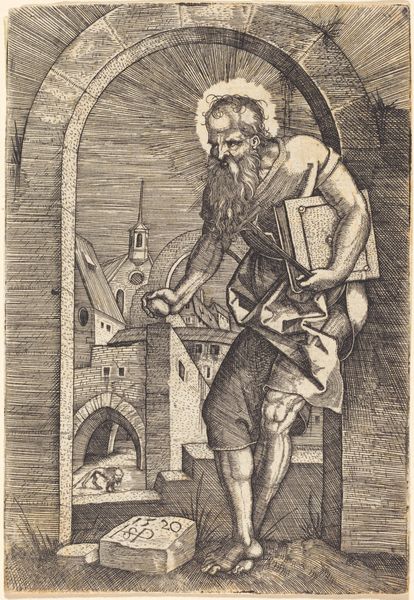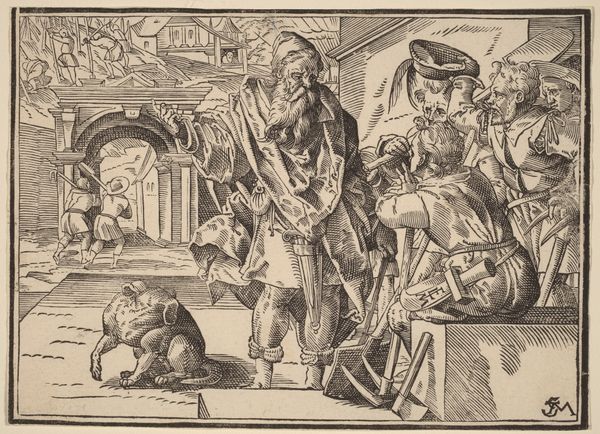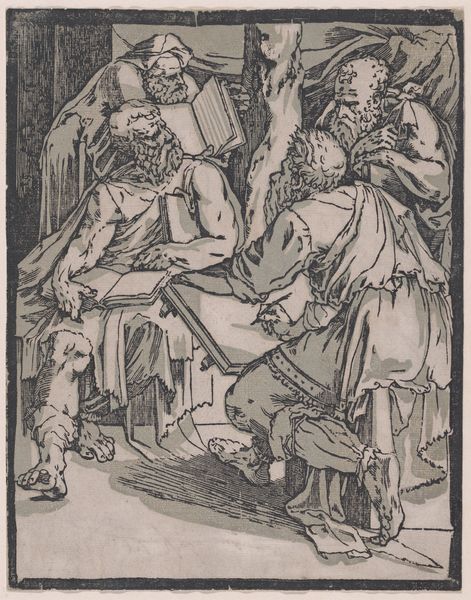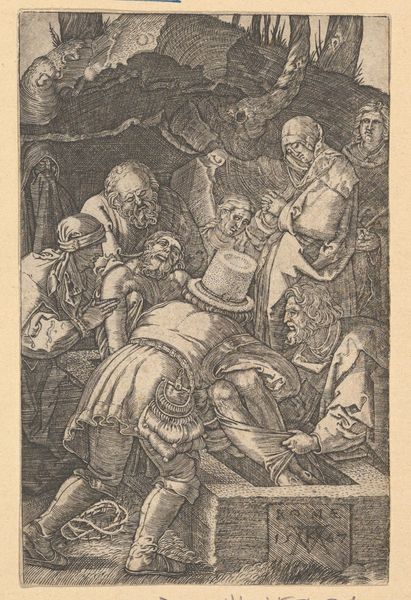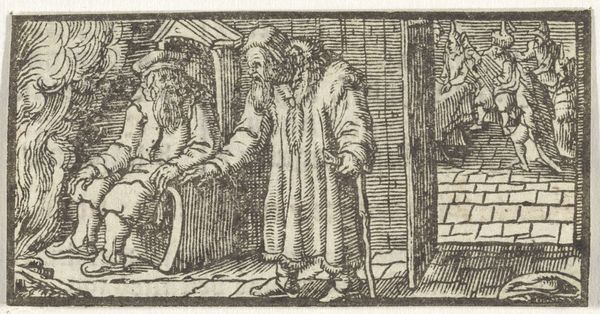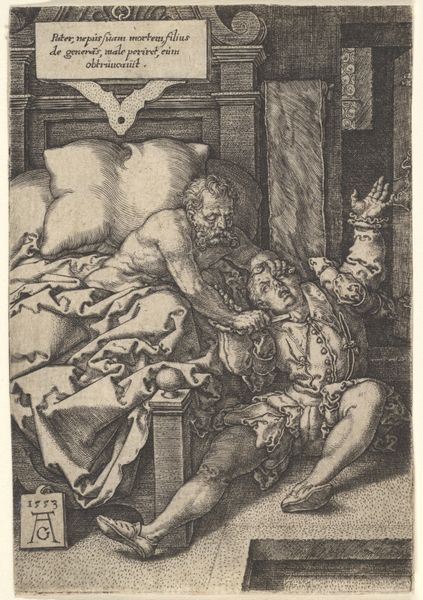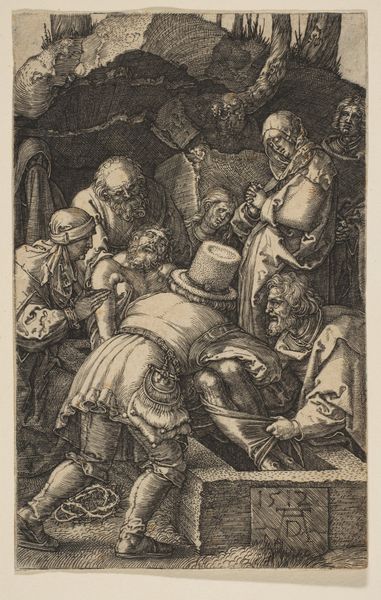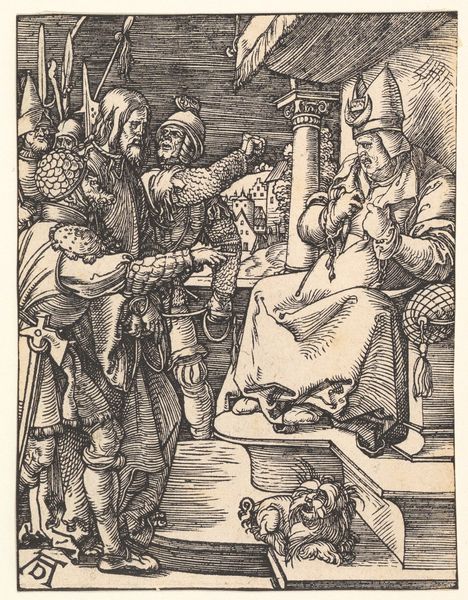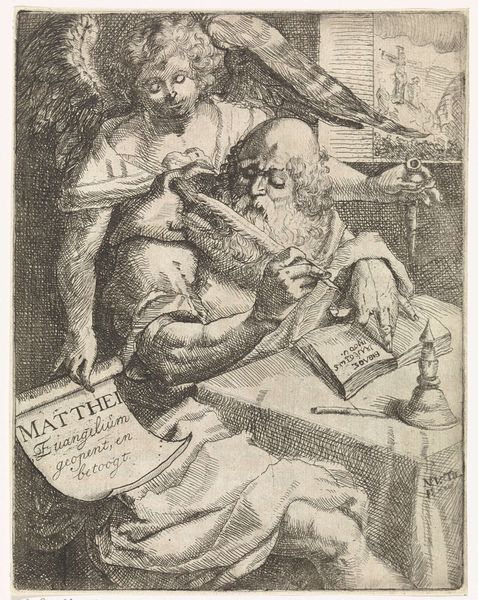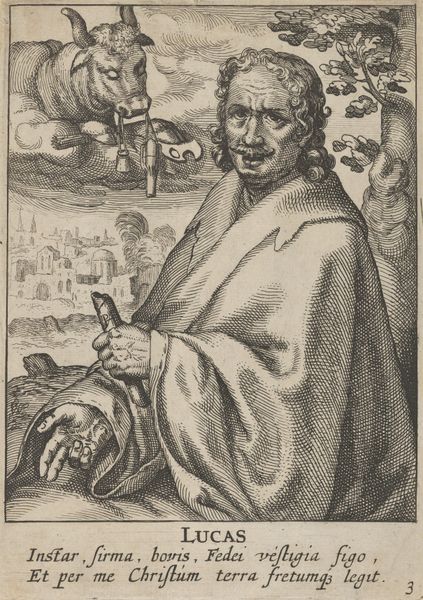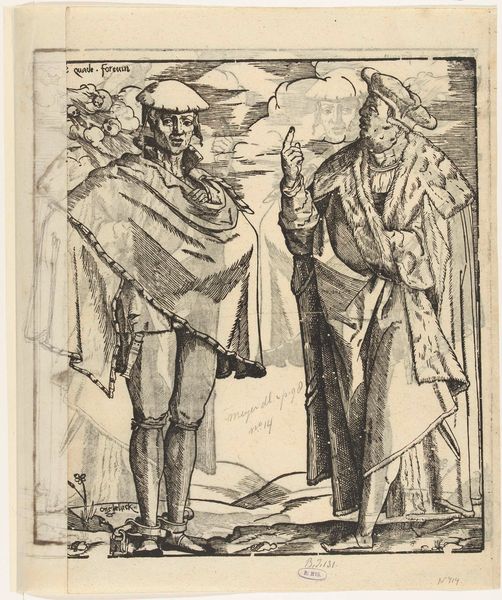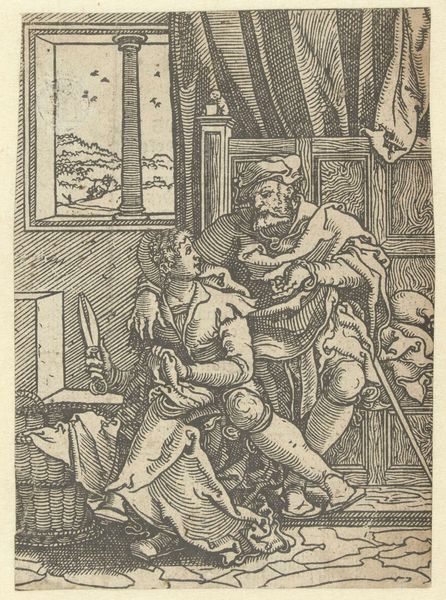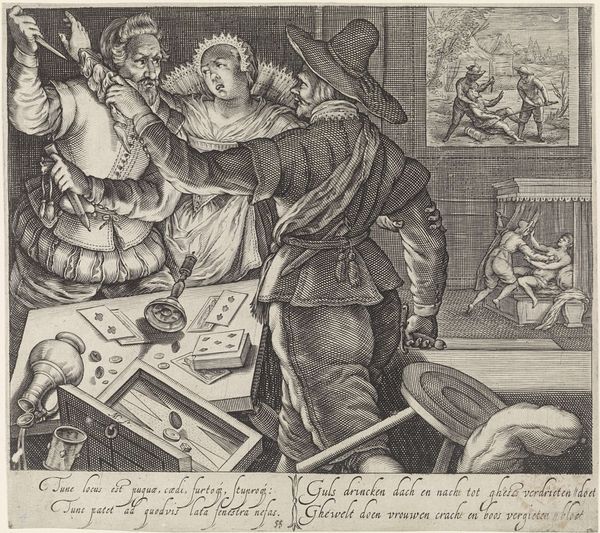
print, engraving
#
narrative-art
# print
#
figuration
#
history-painting
#
engraving
Dimensions: height 77 mm, width 111 mm
Copyright: Rijks Museum: Open Domain
Curator: Here we have Sebald Beham's 1526 engraving, "Moses and Aaron," currently held in the Rijksmuseum collection. Editor: It's…strikingly tactile for a print. You can almost feel the roughness of their garments and the crisp edges of that book. It also strikes me as slightly severe in tone. Curator: Indeed. The severe mood you observe resonates with the story of divine law and authority embodied in these figures. Note how the Tablets of the Law behind Moses mirror his steadfast gaze. The composition directs our eyes to the power they represent. Editor: But it’s all made through labor: the crafting of the metal plate, the repetitive actions to make each impression. I wonder, how did this object circulate, and who could afford such a carefully wrought image? These were commodities, right? Curator: Undoubtedly. This engraving functions both as an object of devotion and a disseminator of religious doctrine, tapping into deeply rooted cultural narratives. Notice how Aaron's priestly headdress symbolizes his role, connecting him to traditions of power and divine service that run throughout history. Editor: Yet look at how Beham renders these robes. Through his process, you sense the artist is dealing with something deeply textural: the wool, the layering…it suggests the social hierarchy and material comfort afforded to these figures. The sharp line work is economical too—reflecting likely mass production. Curator: The material production amplified the circulation of their intertwined destinies, linking them to timeless themes of leadership, obedience, and divine will. Their expressions become etched in the cultural memory of the time. Editor: Exactly. Thinking about it, Beham is embedding these ideological pronouncements *in* the material itself. The circulation is key, and those repeated acts of printing made certain beliefs portable. Curator: Precisely, their story gains new layers with each encounter, shaped by individual perceptions and evolving interpretations. Editor: Looking at it now, knowing more about its context, I appreciate how Beham really manipulated these material properties to convey specific ideological meaning. Curator: It is a piece that certainly continues to offer fresh symbolic resonance for viewers to unpack even now.
Comments
No comments
Be the first to comment and join the conversation on the ultimate creative platform.

